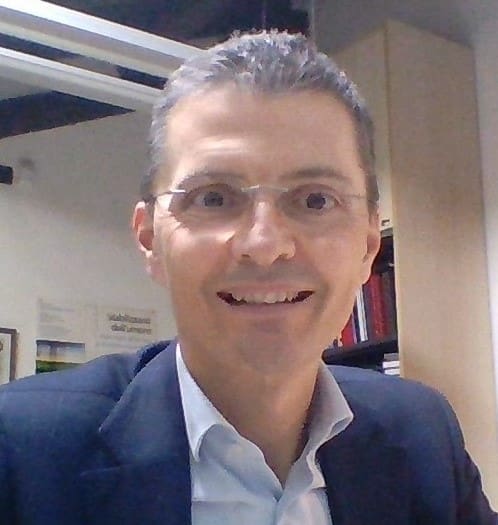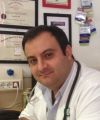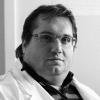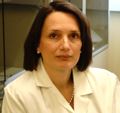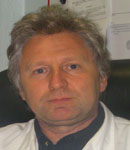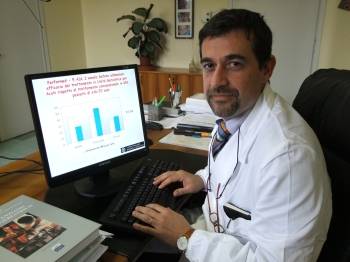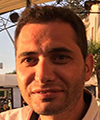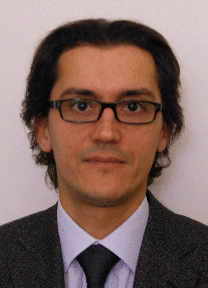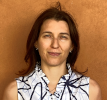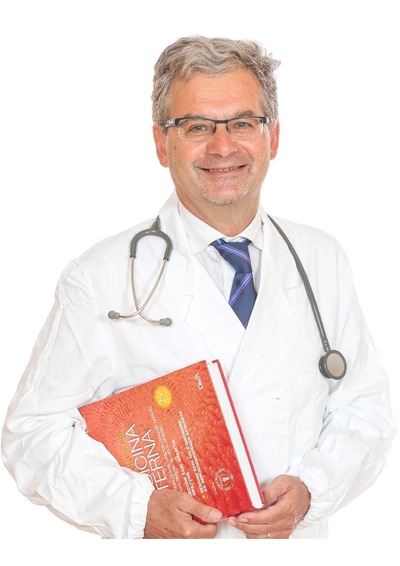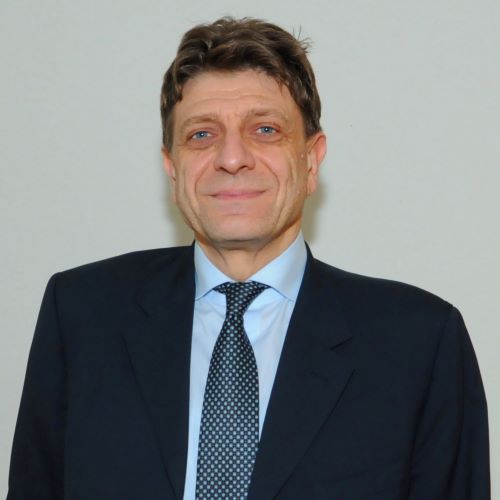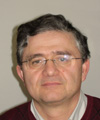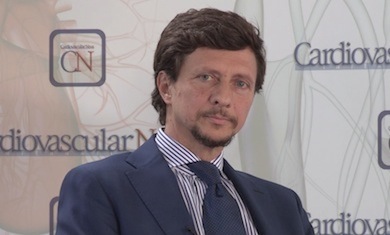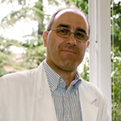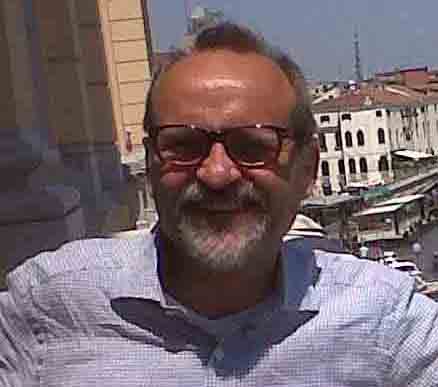Studying at the University of Verona
Here you can find information on the organisational aspects of the Programme, lecture timetables, learning activities and useful contact details for your time at the University, from enrolment to graduation.
Academic calendar
The academic calendar shows the deadlines and scheduled events that are relevant to students, teaching and technical-administrative staff of the University. Public holidays and University closures are also indicated. The academic year normally begins on 1 October each year and ends on 30 September of the following year.
Course calendar
The Academic Calendar sets out the degree programme lecture and exam timetables, as well as the relevant university closure dates..
| Period | From | To |
|---|---|---|
| INF VR - 1° anno 1° sem | Oct 3, 2016 | Dec 22, 2016 |
| INF VR - 2° anno 1° sem | Oct 3, 2016 | Dec 22, 2016 |
| INF VR - 3° anno 1° sem | Oct 17, 2016 | Dec 22, 2016 |
| INF VR - 1° anno 2° sem | Feb 1, 2017 | Mar 31, 2017 |
| INF VR - 3° anno 2° sem | Feb 1, 2017 | Mar 17, 2017 |
| INF VR - 2° anno 2° sem | Apr 26, 2017 | Jun 16, 2017 |
| Session | From | To |
|---|---|---|
| INF VR SESSIONE INVERNALE | Jan 9, 2017 | Jan 31, 2017 |
| INF VR SESSIONE ESTIVA 3° ANNO (1 parte) | Mar 20, 2017 | Mar 31, 2017 |
| INF VR SESSIONE ESTIVA 1° ANNO (1 parte) | Apr 3, 2017 | Apr 21, 2017 |
| INF VR SESSIONE ESTIVA 2° ANNO | Jun 26, 2017 | Jul 21, 2017 |
| INF VR SESSIONE ESTIVA 3° ANNO (2 parte) | Jul 10, 2017 | Jul 31, 2017 |
| INF VR SESSIONE ESTIVA 1° ANNO (2 parte) | Jul 17, 2017 | Jul 31, 2017 |
| INF VR SESSIONE AUTUNNALE 1° ANNO | Sep 1, 2017 | Sep 29, 2017 |
| INF VR SESSIONE AUTUNNALE 3° ANNO | Sep 4, 2017 | Sep 29, 2017 |
| INF VR SESSIONE AUTUNNALE 2° ANNO | Sep 5, 2017 | Sep 29, 2017 |
| Session | From | To |
|---|---|---|
| SESSIONE AUTUNNALE | Nov 1, 2017 | Dec 30, 2017 |
| SESSIONE PRIMAVERILE | Mar 1, 2018 | Apr 30, 2018 |
| Period | From | To |
|---|---|---|
| Festa di Tutti i Santi | Nov 1, 2016 | Nov 1, 2016 |
| Festa dell'Immacolata | Dec 8, 2016 | Dec 8, 2016 |
| Vacanze Natalizie | Dec 23, 2016 | Jan 7, 2017 |
| Vacanze Pasquali | Apr 14, 2017 | Apr 18, 2017 |
| Festa della Liberazione | Apr 25, 2017 | Apr 25, 2017 |
| Festa dei Lavoratori | May 1, 2017 | May 1, 2017 |
| Festa del S. Patrono S. Zeno (VR) | May 21, 2017 | May 21, 2017 |
| Festa della Repubblica | Jun 2, 2017 | Jun 2, 2017 |
| Description | Period | From | To |
|---|---|---|---|
| INF VR - 2° anno 1° esp | INF VR - 2° anno 1° esp | Feb 1, 2017 | Mar 31, 2017 |
| INF VR - 3° anno 1° esp | INF VR - 3° anno 1° esp | Apr 3, 2017 | May 19, 2017 |
| INF VR - 1° anno 1° esp | INF VR - 1° anno 1° esp | Apr 26, 2017 | Jun 1, 2017 |
| INF VR - 3° anno 2° esp | INF VR - 3° anno 2° esp | May 26, 2017 | Jul 7, 2017 |
| INF VR - 1° anno 2° esp | INF VR - 1° anno 2° esp | Jun 9, 2017 | Jul 14, 2017 |
| INF VR - 2° anno 2° esp | INF VR - 2° anno 2° esp | Sep 4, 2017 | Oct 13, 2017 |
| INF VR - 3° anno 3° esp | INF VR - 3° anno 3° esp | Sep 6, 2017 | Oct 20, 2017 |
Exam calendar
Exam dates and rounds are managed by the relevant Medicine Teaching and Student Services Unit.
To view all the exam sessions available, please use the Exam dashboard on ESSE3.
If you forgot your login details or have problems logging in, please contact the relevant IT HelpDesk, or check the login details recovery web page.
Academic staff
 elisabetta.allegrini@aovr.veneto.it
elisabetta.allegrini@aovr.veneto.it
 michele.bertani@univr.it
michele.bertani@univr.it
 assunta.biasi@univr.it
assunta.biasi@univr.it
 luisa.bissoli@mail.azosp.vr.it
luisa.bissoli@mail.azosp.vr.it
 federica.bonato@aor.veneto.it
federica.bonato@aor.veneto.it
Cunico Laura
 laura.cunico@univr.it
laura.cunico@univr.it
 raffaele.cutolo@univr.it
raffaele.cutolo@univr.it
 0444752922
0444752922
 stefania.danese@univr.it
stefania.danese@univr.it
 francesca.defanti@univr.it
francesca.defanti@univr.it
 stefano.detogni@univr.it
stefano.detogni@univr.it
 laura.messina@univr.it
laura.messina@univr.it
 045 8122124
045 8122124
Pernigo Pier Alberto
 pieralberto.pernigo@ospedaleuniverona.it
pieralberto.pernigo@ospedaleuniverona.it
 zenogabriele.poli@univr.it
zenogabriele.poli@univr.it
 er.vedovi@virgilio.it
er.vedovi@virgilio.it
 elisabetta.veronese@aovr.veneto.it
elisabetta.veronese@aovr.veneto.it
 lzivelonghi@aulss9.veneto.it
lzivelonghi@aulss9.veneto.it
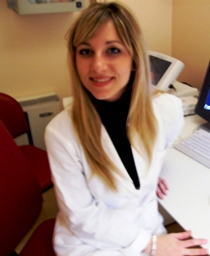
Zoccatelli Giada
 giada.zoccatelli@univr.it
giada.zoccatelli@univr.it
 045 812 3917
045 812 3917
Study Plan
The Study Plan includes all modules, teaching and learning activities that each student will need to undertake during their time at the University.
Please select your Study Plan based on your enrollment year.
1° Year
| Modules | Credits | TAF | SSD |
|---|
Pathophysiology applied at Nursing
Biomolecular fondamentals of life
Morphological and functional fundamentals of life
General and methodological nursing
Health and safety promotion
Clinical practice (1st year)
2° Year activated in the A.Y. 2017/2018
| Modules | Credits | TAF | SSD |
|---|
Application of diagnostic and therapeutic processes
Chronic clinical nursing care
Clinical nursing care in surgical area
Clinical nursing care in medical area
Relationship in nursing care
Clinical practice (2nd year)
3° Year activated in the A.Y. 2018/2019
| Modules | Credits | TAF | SSD |
|---|
Maternal and paediatric nursing care
Critical nursing care
Evidence based nursing
Health organizations and care processes
Legal, bioethic and deontological principles of professional practice
Multidisciplinary seminaries
Clinical practice (3rd year)
| Modules | Credits | TAF | SSD |
|---|
Pathophysiology applied at Nursing
Biomolecular fondamentals of life
Morphological and functional fundamentals of life
General and methodological nursing
Health and safety promotion
Clinical practice (1st year)
| Modules | Credits | TAF | SSD |
|---|
Application of diagnostic and therapeutic processes
Chronic clinical nursing care
Clinical nursing care in surgical area
Clinical nursing care in medical area
Relationship in nursing care
Clinical practice (2nd year)
| Modules | Credits | TAF | SSD |
|---|
Maternal and paediatric nursing care
Critical nursing care
Evidence based nursing
Health organizations and care processes
Legal, bioethic and deontological principles of professional practice
Multidisciplinary seminaries
Clinical practice (3rd year)
Legend | Type of training activity (TTA)
TAF (Type of Educational Activity) All courses and activities are classified into different types of educational activities, indicated by a letter.
Morphological and functional fundamentals of life [Matricole dispari] (2016/2017)
The teaching is organized as follows:
Learning outcomes
------------------------
MM: FISIOLOGIA
------------------------
The course provides the scientific knowledge of the human body's general structure. The student learns the working principles of the different organs, the dynamic integration of organs in apparatuses and the general mechanisms of the functional control in normal conditions.
------------------------
MM: ANATOMIA UMANA
------------------------
The course is aimed at learning by the student of architecture and anatomical morphology of organs and systems and of the functional significance of their overall organization in the human body.
------------------------
MM: ISTOLOGIA
------------------------
Program
------------------------
MM: FISIOLOGIA
------------------------
CELLULAR PHYSIOLOGY 1) Cellular homeostasis 2) Action potential and synaptic transmission 3) Skeletal muscle CARDIOVASCULAR APPARATUS 4) Cardiac autorhythmicity and cardiac impulse propagation 5) Heart nervous control 6) Excitement and cardiac contractility 7) Cardiac reflexes 8) Stroke volume 9) Cardiac output 10) ECG and cardiac cycle 11) Cardiac work and metabolism 12) Hemodynamic principles of the cardiovascular system 13) Vascular resistance 14) Capillaires, veins and lymphatics 15) Blood pressure 16) Cardiovascolar control RESPIRATORY APPARATUS 17) Respiratory mechanism 18) Pulmonary volumes and capacities 19) Ventilation and perfusion 20) Gas diffusion 21) Respiratory gas transport 22) Respiratory control KIDNEY APPARATUS 23) Nephron 24) Glomerular filtration rate and renal plasma flow 25) Reabsorption and secretion renal 26) Urine concentration and dilution 27) Idric and elecrolyte balance 28) Acid-base balance 29) Urination GASTROINTESTINAL APPARATUS 30) Smooth muscle 31) Gastrointestinal physiology 32) Esophageal and gastric motility 33) Intestinal motility 34) Salivary secretion 35) Gastric secretion 36) Pancreatic secretion 37) Liver and gallbladder 38) Secretion and absorption in the intestine NERVOUS SYSTEM 39) Autonomic nervous system (sympathetic and parasympathetic control) 40) Adrenergic and cholinergic receptors
------------------------
MM: ANATOMIA UMANA
------------------------
Introduction to the study of human anatomy. General structure of the organism and anatomical terminology: anatomic location; section planes and surfaces; movements; parenchymatous viscera; hollow viscera; Vascular-nervous bundles. Topographic Anatomy: General Organization of the human body: the body surface; cavity; thorax; abdomen; neck; head, arts. Skin: microscopic structure; appendages; mammary gland. Musculoskeletal System: -The skeleton and joints: general structure of the skeleton. Types of bones. The neurocranium and splanchnocranium, general structure: skull. Description of individual cranial bones. Spine and ribcage. Shoulder girdle and upper limb bones. Pelvic girdle and lower limb bones. -Joint Classification and description of the main. -Muscles: muscle tissue, muscular tissue types and their functional differentiation. The muscles of the head and neck; muscles of the trunk; pelvic muscles; limb muscles. Cardiovascular: General information; heart; arteries; veins; microcirculation; pulmonary circulation; systemic circulation; arteries and veins of the great movement; Fetal circulation elements. The blood. The lymphatic system: linph ; lymph nodes; thyme; spleen; lymphatic pathways. Digestive system: General Organization: the oral cavity; tongue and teeth; the pharynx; esophagus; stomach; intestine; pancreas; liver; biliary tract; gallbladder; peritoneum. Respiratory system: external nose and nasal passages; larynx; trachea; bronchi; the lungs; pleure. Urinary system: General information; Rene; renal pelvis; ureter; bladder; male urethra and prostate; the female urethra. Endocrine system: topography, structure and function of the major endocrine glands. Female reproductive system: ovary; fallopian tubes; uterus; vagina; external genitalia. placenta. Male reproductive system: General information; testicle; sperm streets; the external genitals. Central nervous system: General Organization. description of the spinal cord, brainstem, cerebellum, diencephalon, cerebrum; description of the main sensory and motor systems. Peripheral nervous system: General Organization; cranial nerves; spinal nerves; the vegetative nervous system.
------------------------
MM: ISTOLOGIA
------------------------
Bibliography
| Author | Title | Publishing house | Year | ISBN | Notes |
|---|---|---|---|---|---|
| STUART IRA FOX | FISIOLOGIA UMANA | PICCIN | 2019 | 978-88-299-3040-1 | |
| Stanfield CL | Fisiologia (Edizione 5) | EdiSES | 2017 | 9788879599726 | |
| vanputte regan russo | Anatomia (Edizione 3) | idelson gnocchi | 2014 | 9788879475846 | |
| Drake - Volg - Mitchell | Anatomia del Gray - I fondamenti di Gray | 2015 | |||
| Netter F.H. | Atlante di anatomia fisiopatologia e clinica | Collezione CIBA |
Examination Methods
------------------------
MM: FISIOLOGIA
------------------------
written test
------------------------
MM: ANATOMIA UMANA
------------------------
written test
------------------------
MM: ISTOLOGIA
------------------------
written test
Career prospects
Module/Programme news
News for students
There you will find information, resources and services useful during your time at the University (Student’s exam record, your study plan on ESSE3, Distance Learning courses, university email account, office forms, administrative procedures, etc.). You can log into MyUnivr with your GIA login details: only in this way will you be able to receive notification of all the notices from your teachers and your secretariat via email and also via the Univr app.
Gestione carriere
Guida ai programmi degli insegnamenti
La Guida ai programmi degli insegnamenti in allegato è uno strumento di sintesi e orientamento per lo studente, creato da un gruppo di lavoro interno alla Commissione didattica del CdS.
Per tutte le attvità previste dal piano di studi sono descritte: le finalità, i contenuti e integrazioni, learning outcome, i metodi di insegnamento e valutazione e bilbliografia essenziale
Documents
| Title | Info File |
|---|---|
|
|
pdf, it, 1581 KB, 11/07/24 |
Orario lezioni
Si pubblicano gli orari delle lezioni relativi al 2° semestre A.A. 2023/2024
Gli orari potrebbero subire alcune modifiche, pertanto si consiglia di consultare l'orario delle lezioni giornalmente nell‘area riservata MyUnivr e/o ORARIO LEZIONI.
Documents
| Title | Info File |
|---|---|
|
|
pdf, it, 126 KB, 06/03/24 |
|
|
pdf, it, 128 KB, 09/02/24 |
|
|
pdf, it, 120 KB, 18/03/24 |
|
|
pdf, it, 122 KB, 18/03/24 |
|
|
pdf, it, 125 KB, 20/03/24 |
|
|
octet-stream, it, 32 KB, 04/04/24 |
Graduation
Documents
| Title | Info File |
|---|---|
|
|
pdf, it, 1487 KB, 20/08/24 |
List of thesis proposals
| theses proposals | Research area |
|---|---|
| Progetto WITHSTAND- Supportare la resilienza negli eventi avversi in sanità | The Human Mind and Its Complexity: Cognitive science, psychology, linguistics, philosophy of mind - Clinical and health psychology |
| Effetti psicologici del CoViD sugli operatori sanitari | Various topics |
| Il dismorfismo corporeo | Various topics |
| Il fine vita: cure palliative, eutanasia e suicidio assistito | Various topics |
| Il problema della donazione degli organi | Various topics |
| Il sacrificio e l'assurdo | Various topics |
| La medicina narrativa | Various topics |
| Le cure palliative: dignità, cura e lutto | Various topics |
| Ricordo e ossessione | Various topics |
Tirocinio professionalizzante
Finalità del Tirocinio
Durante i 3 anni di laurea le attività teoriche sono alternate con esperienze di tirocinio, nelle quali gli studenti possono esercitarsi nelle abilità cliniche con l’obiettivo di sviluppare la loro professionalità e prepararsi ad entrare nel mondo del lavoro come infermieri. Tali esperienze saranno effettuate in strutture sanitarie ospedaliere, territoriali, socio assistenziali convenzionate con l’Università sulla base dell’accertamento della qualità dell’offerta formativa, oltre che dell’adeguatezza della dotazione di personale e di strutture. Durante il tirocinio lo studente può sperimentarsi in modo attivo affiancato da un infermiere esperto della sede di tirocinio chiamato Supervisore, che facilita l’apprendimento in sicurezza delle competenze professionali , inoltre può avvalersi anche del supporto di un Tutor professionale appartenente al Corso di studio (CdS) con competenze cliniche e pedagogiche che attiva e sostiene i processi di apprendimento dall’esperienza e aiuta a superare eventuali difficoltà.
Le attività formative professionalizzanti e di tirocinio comprendono 60 CFU articolati in:
- esperienze guidate in diversi contesti di tirocinio;
- sessioni tutoriali per preparare e guidare lo studente durante l’esperienza;
- esercitazioni e simulazioni in laboratori dedicati, in cui si sviluppano abilità tecniche, relazionali e metodologiche in situazione protetta, prima o durante la sperimentazione nei contesti reali;
- elaborati scritti su mandati specifici e sessioni di studio guidato.
Pianificazione del tirocinio
L’impegno per lo studente è progressivo nei 3 anni di corso: al 1° anno sono previste esperienze per un totale di 16 CFU; al 2° anno 20 CFU; al 3° anno 24 CFU con la possibilità per lo studente di scegliere almeno un’esperienza è scelta sulla base dei propri bisogni formativi e interessi. Ogni esperienza di tirocinio ha una durata variabile tra 5 e/o 8 settimane e si svolge in contesti diversi. Di seguito si rappresenta un esempio di alternanza delle diverse attività formative nel triennio
|
1° anno |
||||||||
|
TEORIA |
LABORATORI |
ESAMI |
TEORIA |
LABORATORI |
TIROCINIO |
ESAMI |
||
|
2° anno |
||||||||
|
TEORIA |
ESAME |
LABORATORI |
TIROCINIO |
TEORIA |
ESAME |
LABORATORI |
TIROCINIO |
ESAME |
|
3° anno |
||||||||
|
TEORIA |
ESAMI |
LABORATORI |
TIROCINIO |
TEORIA |
ESAME |
TIROCINIO |
ESAME |
TIROCINIO |
Le aree in cui gli studenti potranno svolgere i loro tirocini sono:
- medicina generale e medicina specialistica
- chirurgia generale e chirurgia specialistica
- centri di cure intermedie e di riabilitazione
- area intensiva e dell’emergenza
- area materno-infantile
- servizi di salute mentale
- cure primarie e territoriali
- centri assistenziali per anziani
Il Corso ha attivato una rete molto ampia di sedi su tutto il territorio della provincia di Verona, che garantisce un’offerta formativa ricca e diversificata per l’acquisizione delle competenze infermieristiche.
Sedi attivate e convenzionate
|
*Azienda Ospedaliera Universitaria Integrata- Verona |
Borgo Trento Ospedale Civile Maggiore* |
|
Borgo Roma Ospedale Policlinico GB Rossi* |
|
|
ULSS 9 Scaligera |
Ospedale Fracastoro – San Bonifacio |
|
Distretti 1 - 2 – 3 - 4 Assistenza Domiciliare Integrata |
|
|
Ospedale di Marzana |
|
|
Area Salute Mentale |
|
|
Ospedale di Comunità, Casa di riposo – Tregnago |
|
|
Ospedale di Riabilitazione Psicosociale S. Giuliana |
|
|
IRCCS Ospedale Sacro Cuore Don Calabria |
|
|
Ospedale P. Pederzoli Peschiera del Garda |
|
|
Strutture Residenziali Fondazione Pia Opera Ciccarelli |
|
|
Centro Servizi per Anziani non Autosufficienti Casa Soggiorno “PCC Bresciani” |
|
* La sede principale per i tirocini è rappresentata dall’Azienda Ospedaliera Universitaria Integrata di Verona, con le due sedi degli Ospedali Policlinico di Borgo Roma e Civile Maggiore di Borgo Trento; tutti gli studenti svolgeranno almeno un tirocinio in queste strutture nel triennio
In allegato alla pagina ulteriori informazioni sull’offerta formativa.
La valutazione delle competenze acquisite in tirocinio
Le esperienze di tirocinio sono progettate, valutate e documentate durante il percorso dello studente.
Durante ogni esperienza di tirocinio lo studente riceve dai Supervisori valutazioni formative sui suoi progressi attraverso feedback, colloqui e schede di valutazione dove sono documentate le perfomance previste dagli obiettivi formativi specifici dell’anno di corso.
Al termine di ciascun anno di corso viene effettuata una valutazione sommativa (certificativa) per accertare i livelli raggiunti dallo studente nello sviluppo delle competenze professionali attese e definire il passaggio all’anno di corso successivo. La valutazione viene effettuata da una Commissione presieduta dal Coordinatore delle attività professionalizzanti, e composta da almeno un docente e da un Tutor professionale. Tale valutazione è la sintesi delle valutazioni formative documentate durante l’anno di corso, il profitto raggiunto negli elaborati scritti e le performance delle abilità tecniche assistenziali e comunicativo/relazionali dimostrate attraverso un esame di tirocinio, che può essere realizzato con prove simulate, colloqui e prove scritte relative a casi o situazioni assistenziali.
L’esame annuale di tirocinio prevede un unico appello per anno accademico, salvo particolari situazioni per le quali la Commissione didattica potrà concedere un appello straordinario. La valutazione sommativa del tirocinio è espressa e registrata nella carriera con voto in trentesimi.
Prerequisiti di accesso al tirocinio.
Il Coordinatore delle attività professionalizzanti, ammette alla frequenza dell’esperienza di tirocinio previsto per l’anno di corso, gli studenti che hanno frequentato regolarmente:
- le attività teoriche, in particolare gli insegnamenti delle discipline professionali e relative alla sicurezza dell’anno in corso e dell’anno precedente
- laboratori professionali ritenuti propedeutici al tirocinio
Ulteriori informazioni sono indicate nella “Guida alle attività formative”
https://www.corsi.univr.it/?ent=cs&id=471&menu=studiare&tab=guida-alle-attivita-formative&lang=it
Ulteriori dettagli sono disciplinati dal Regolamento del corso di studio
Per maggiori informazioni consultare la pagina del servizio
Documents
| Title | Info File |
|---|---|
|
|
pdf, it, 678 KB, 22/07/24 |
Attività Seminariali e a scelta dello studente
Attività seminariali
Il Corso di laurea propone annualmente seminari su problematiche sanitarie rilevanti o emergenti trattate da esperti e finalizzate a maturare un'ampia ed aggiornata competenza professionale; sono privilegiate modalità interdisciplinari. Possono svolgersi in presenza e/o online.
All’inizio del 2° e 3° anno, il Coordinatore delle attività professionalizzanti e il Tutor Referente di anno, presentano in aula l’offerta formativa delle attività seminariali, che impegnano 4 CFU e sono certificate al termine del 3° anno di corso con valutazione approvato/non approvato.
Nella “Guida alle attività formative” di 2° e 3° anno pubblicata nella pagina dedicata, è presente la tabella riassuntiva delle Attività Seminariali da svolgere nell’anno accademico.
Attività a scelta dello studente
Le attività a scelta costituiscono parte integrante del percorso di studi e sono finalizzate all’apprendimento di specifiche conoscenze ed aspetti formativi che ottimizzano la preparazione dello studente.
Per loro definizione sono attività progettate autonomamente dallo studente con l’obiettivo di personalizzare il curriculum e sono suddivise in relazione agli obiettivi di approfondimento teorico e/o pratico seguenti:
- Autoapprendimento (es. TECO test)
- Collaborazione e relazione tra pari e/o altre figure per applicare conoscenze disciplinari (es. Peer tutoring, partecipazione giornata mondiale lavaggio mani) linguistiche (es. Accoglimento studenti ERASMUS) e organizzative e di orientamento alla professione (es. rappresentante degli studenti, partecipazione Open day)
- Acquisizione di conoscenze relative a contenuti clinico-assistenziali (es. corsi FAD, o di formazione aziendale) competenze linguistiche (es. CLA) e contenuti trasversali (es. TALC)
- Osservazione in ambiti clinico-assistenziali, con la partecipazione a periodi di tirocinio osservativo in ambiti specifici (es. ambulatorio centro di diabetologia pediatrica)
All’inizio del 2° e 3° anno, il Coordinatore delle attività professionalizzanti e il Tutor Referente dell'attività, presentano in aula l’offerta formativa delle attività a scelta dello studente, che impegnano 6 CFU e sono certificate al termine del 3° anno di corso con valutazione approvato/non approvato.
Tutte le informazioni dettagliate sono contenute nella Guida alle attività a scelta dello studente che viene aggiornata annualmente
Documents
| Title | Info File |
|---|---|
|
|
pdf, it, 121 KB, 12/10/23 |
|
|
pdf, it, 344 KB, 22/07/24 |
|
|
pdf, it, 703 KB, 10/11/23 |
Guida alle attività formative
Guida alle attività formative
Documents
| Title | Info File |
|---|---|
|
|
pdf, it, 1398 KB, 27/06/24 |
|
|
pdf, it, 1269 KB, 31/10/23 |
|
|
pdf, it, 554 KB, 02/11/23 |
Linee guida per riconoscimento cfu
Lo studente che intende chiedere il riconoscimento di moduli o insegnamenti pregressi dovrà presentare domanda, entro il 30 novembre dell’anno accademico in corso, seguendo le indicazioni indicate al link seguente: https://www.univr.it/it/i-nostri-servizi/segreterie-studenti/gestione-carriere-studenti-medicina-e-chirurgia/riconoscimento-crediti-acquisiti-da-una-carriera-pregressa-medicina
Documents
| Title | Info File |
|---|---|
|
|
pdf, it, 295 KB, 09/11/21 |
Student login and resources
Appelli d'esame
Documents
| Title | Info File |
|---|---|
|
|
pdf, it, 121 KB, 22/08/24 |
Erasmus
Valutazione della qualità formativa
Documents
| Title | Info File |
|---|---|
|
|
pdf, it, 1663 KB, 29/08/24 |
|
|
pdf, it, 981 KB, 29/08/24 |
Orientamento in itinere per studenti e studentesse
In questa sezione vengono descritte le iniziative specifiche del CdS
Modalità e sedi di frequenza
La frequenza è obbligatoria.
Maggiori dettagli in merito all'obbligo di frequenza vengono riportati nel Regolamento del corso di studio disponibile alla voce Regolamenti nel menu Il Corso. Anche se il regolamento non prevede un obbligo specifico, verifica le indicazioni previste dal singolo docente per ciascun insegnamento o per eventuali laboratori e/o tirocinio.
Le sedi di svolgimento delle lezioni e degli esami sono le seguenti:
Attività didattiche regime part-time: modalità di richiesta
È consentita l'iscrizione a tempo parziale. Per saperne di più consulta la pagina Possibilità di iscrizione Part time.
La domanda di iscrizione part-time può essere presentata all'inizio di ogni anno accademico e comunque entro il 30 novembre di ogni anno. Entro lo stesso termine, se necessario, lo studente potrà richiedere di tornare al regime full-time. Al link seguente la pagina del servizio https://www.univr.it/it/i-nostri-servizi/segreterie-studenti/flessibilita-nella-frequenza-dei-corsi/possibilita-di-iscrizione-part-time-e-ripristino-full-time
Una volta inviata la domanda, lo studente concorda in via preventiva con il Coordinatore della didattica professionale (CDP), il piano di studi che intende perseguire nel periodo di part-time compilando il modulo in allegato.
Documents
| Title | Info File |
|---|---|
|
|
octet-stream, it, 1309 KB, 23/08/24 |


